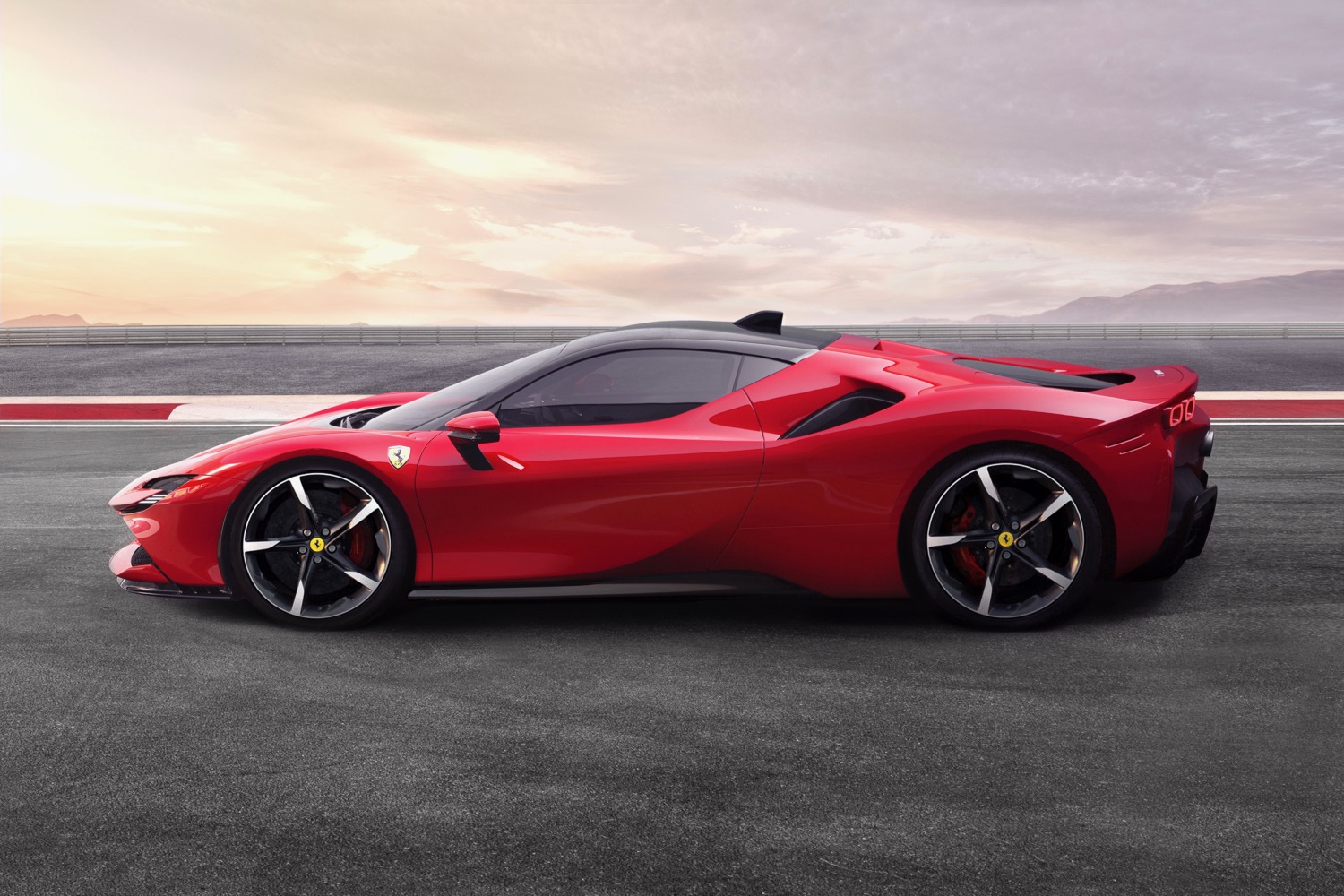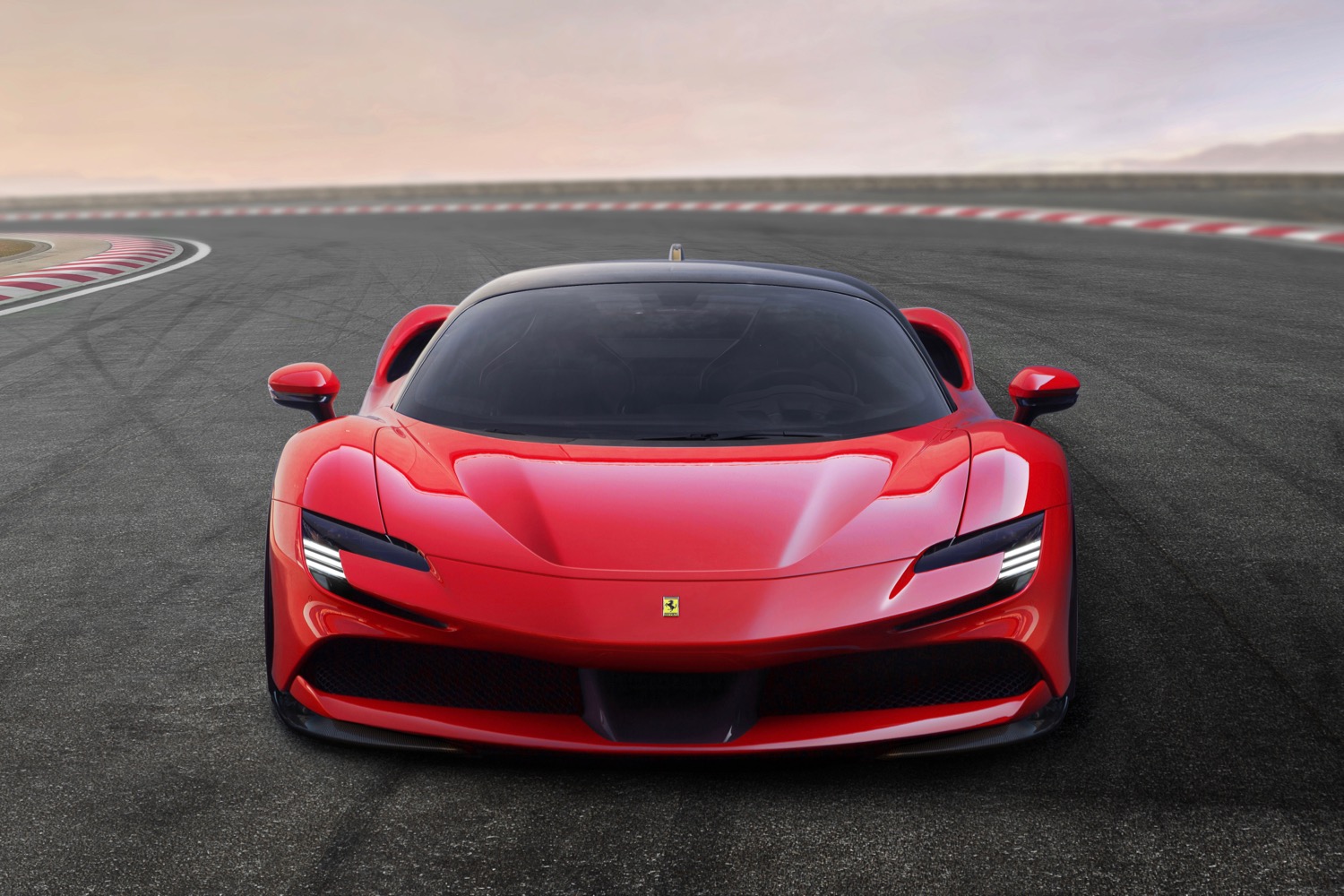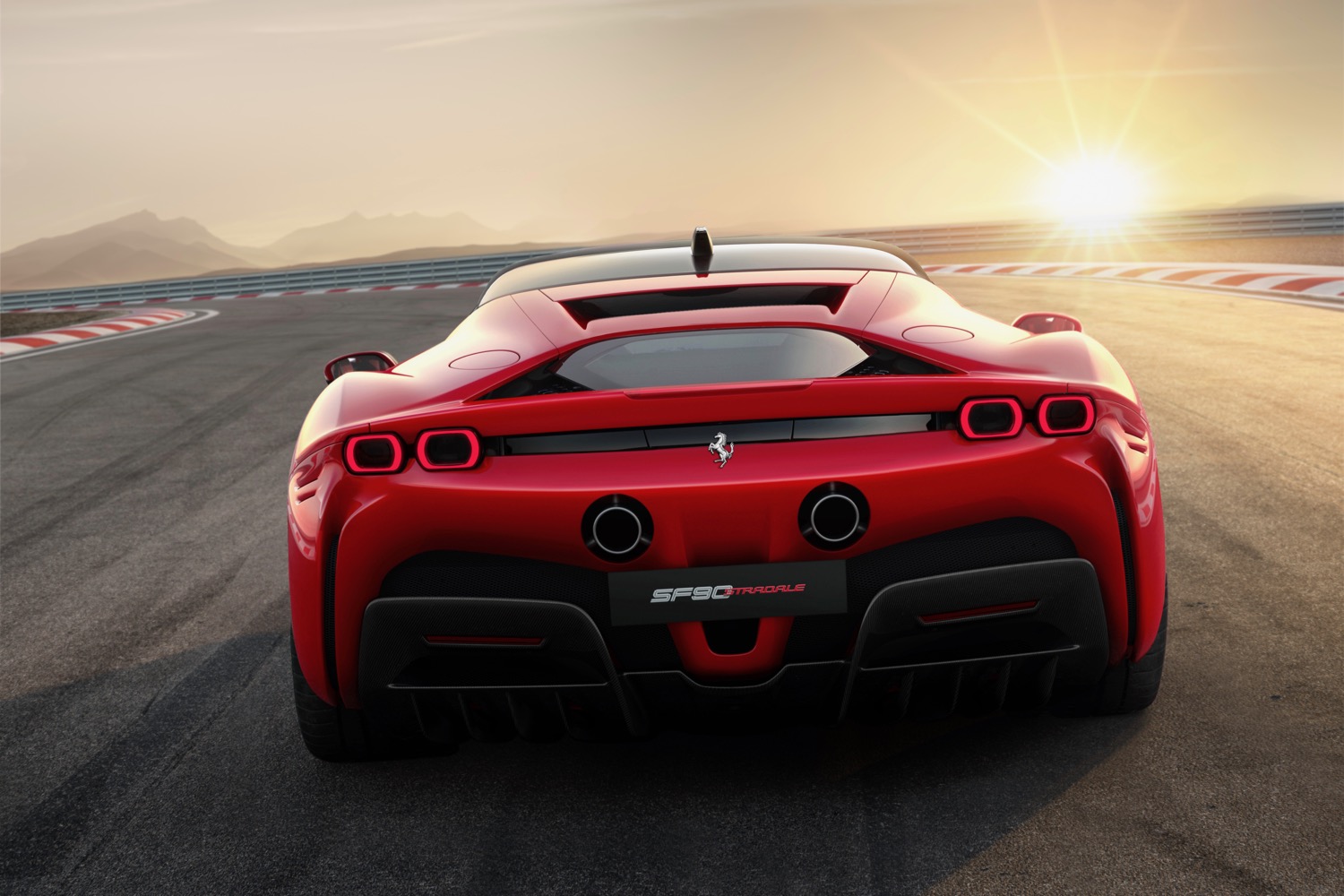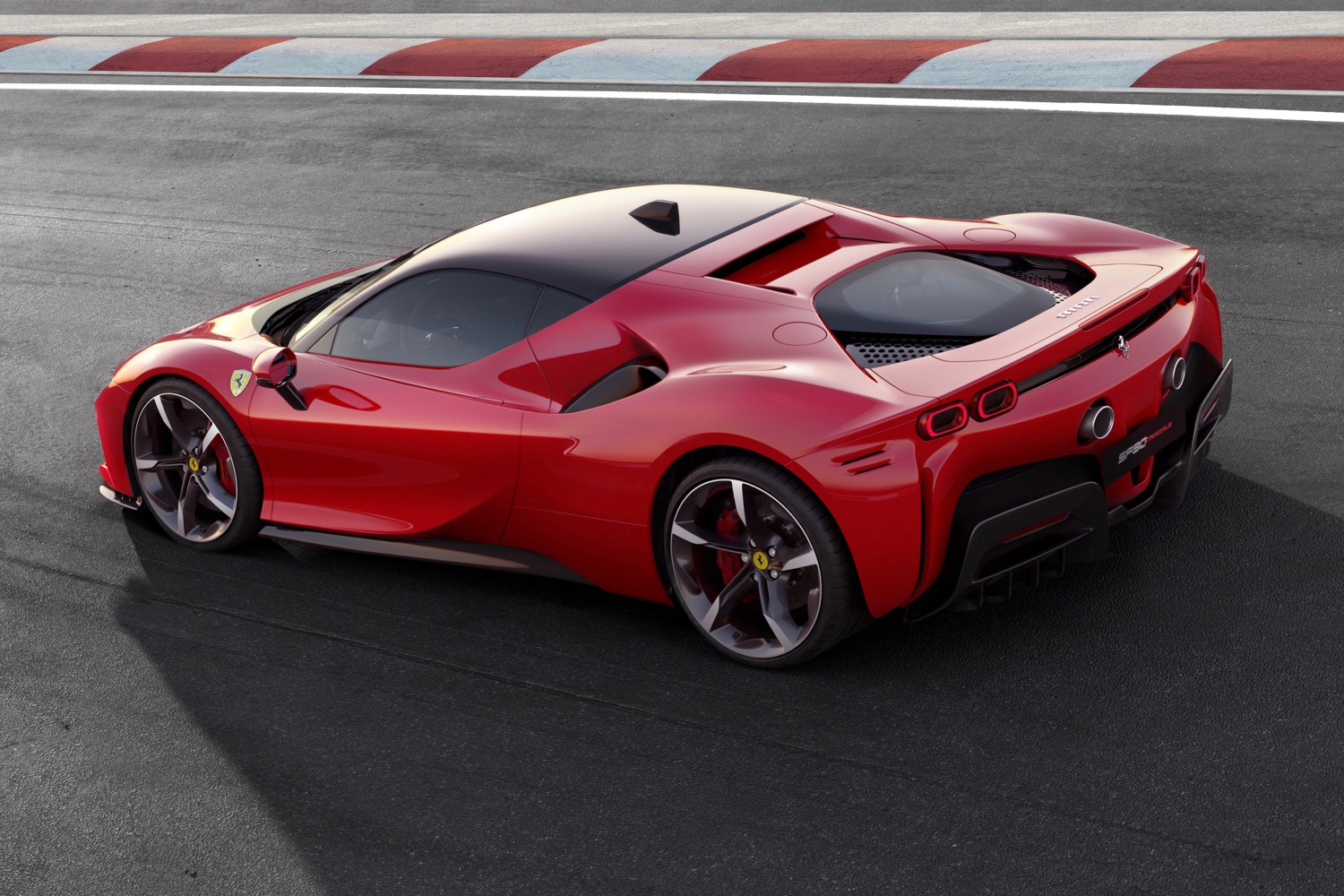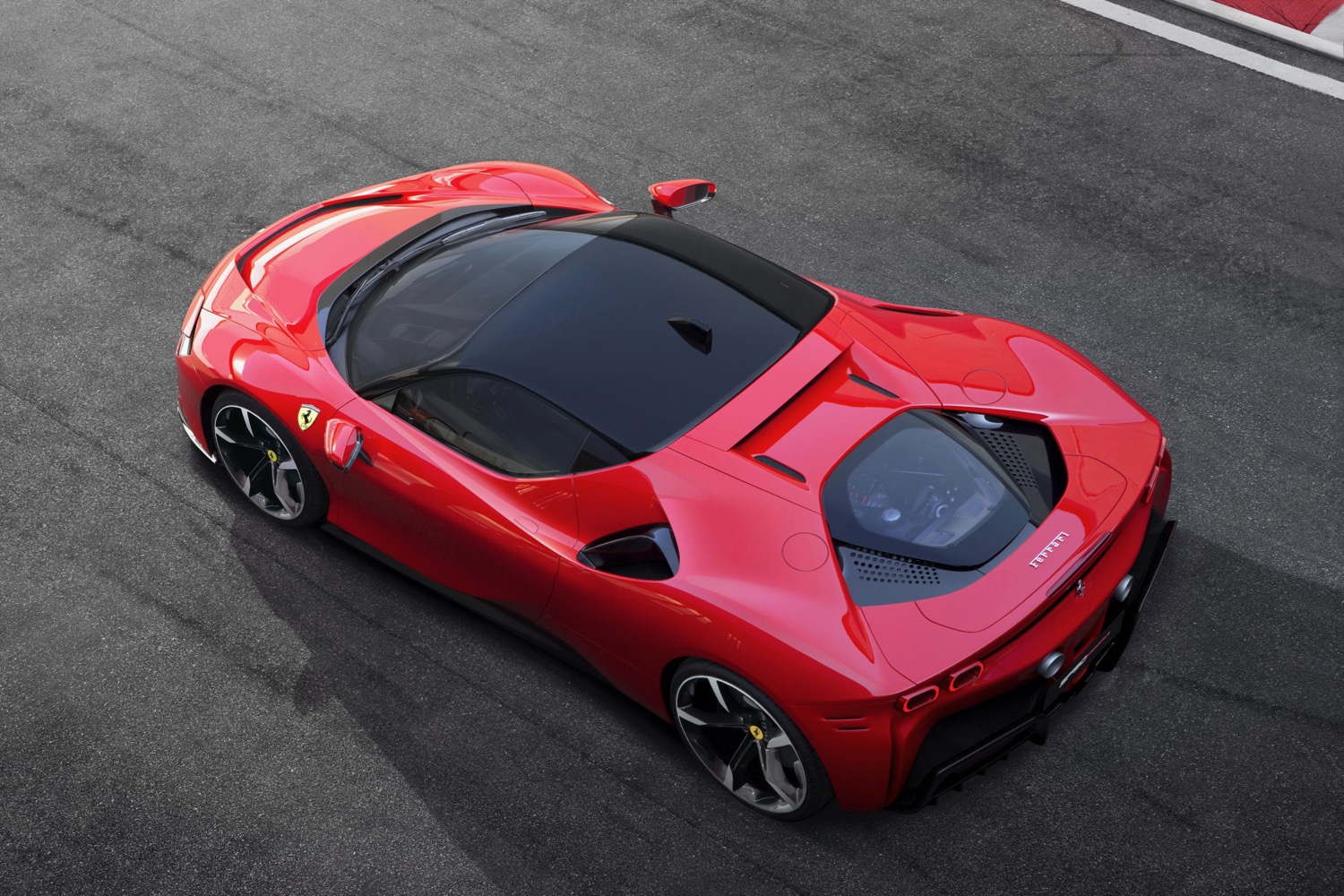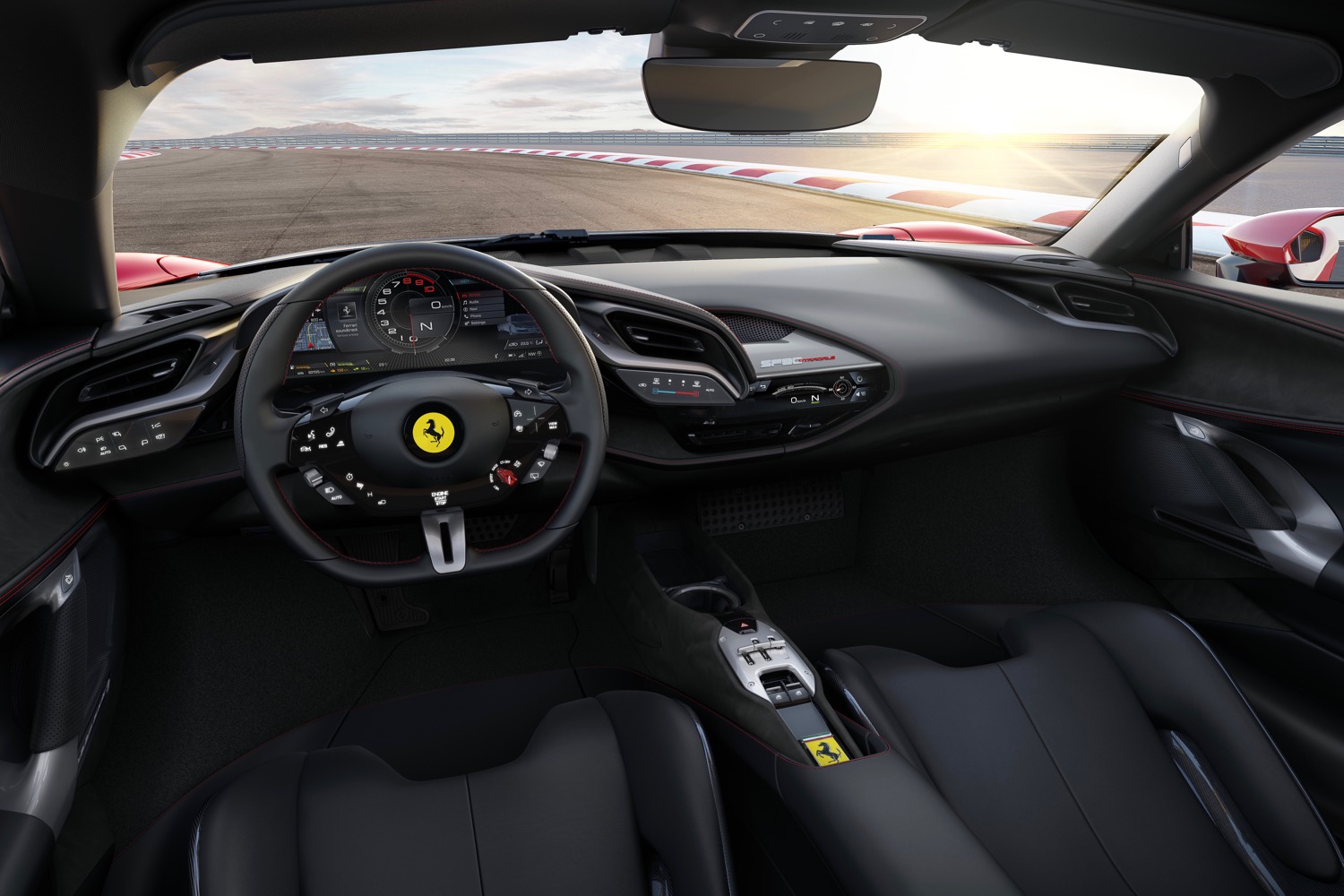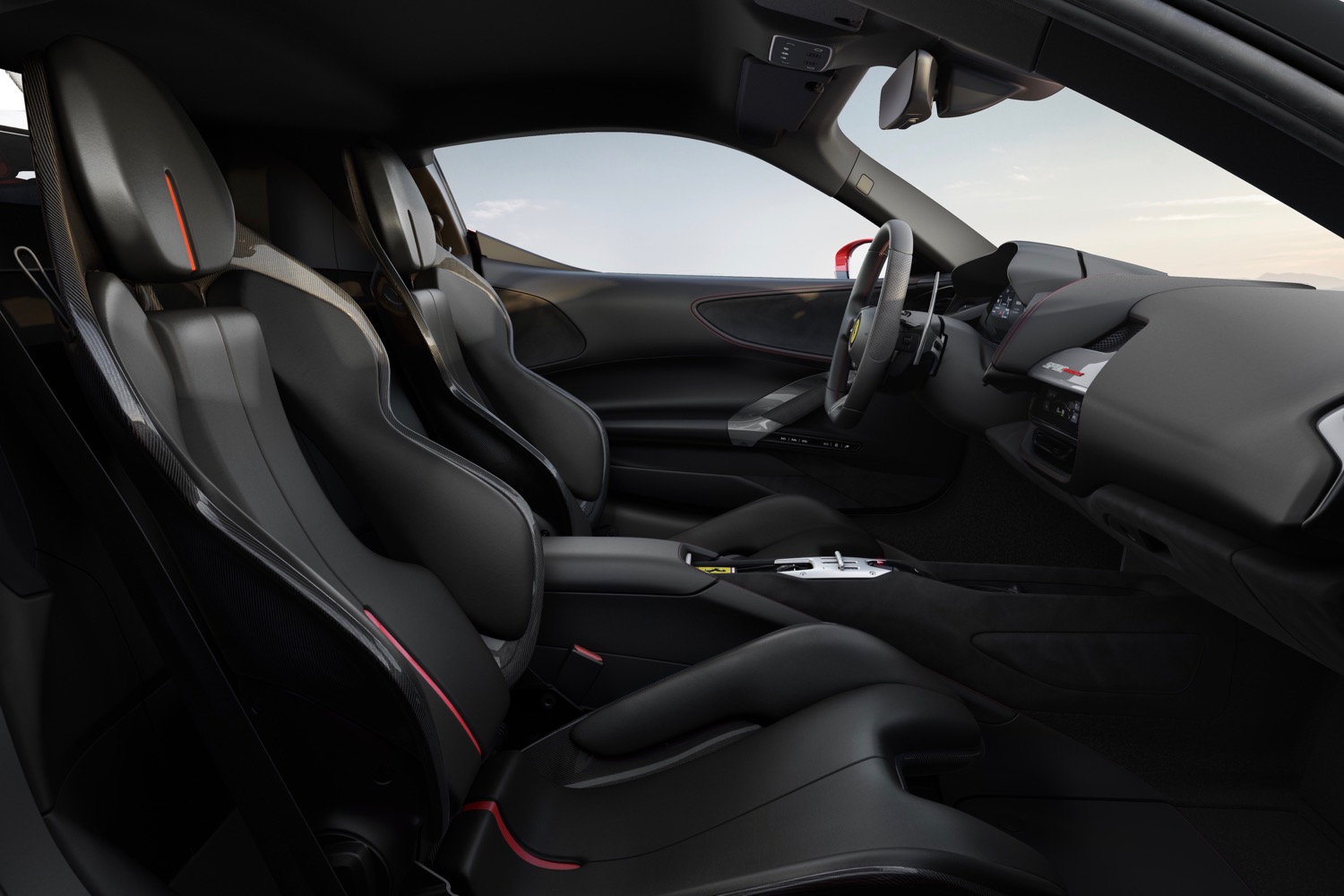The launch of a new Ferrari always generates some excitement, but this time the Prancing Horse is really giving car fans a reason to stand up and take notice. The SF90 Stradale isn’t just another outrageous supercar — it truly breaks new ground for Ferrari. It’s the first production Ferrari plug-in hybrid, as well as the most powerful Ferrari road car ever.
Ferrari previously tried out electrification with the LaFerrari, which had relatively limited electric assist, but didn’t have a plug. The SF90 Stradale sports a 7.9-kilowatt-hour lithium-ion battery pack, allowing it to drive on electric power alone for up to 16 miles, according to Ferrari. The SF90 Stradale is also a series production model, rather than a limited edition like the LaFerrari.
The Stradale’s plug-in hybrid powertrain is built around a modified version of the 3.9-liter twin-turbocharged V8 from Ferrari’s 488-series cars, which makes 769 horsepower on its own. The V8 works with three electric motors. One is attached to the eight-speed dual-clutch transmission, providing 148 hp. Two more sit up front, one powering each front wheel, contributing a combined 84 hp and giving the SF90 Stradale all-wheel drive. Output from the motors is limited by the capabilities of the battery pack, meaning they can only provide up to 217 hp at a time. That still gives the SF90 Stradale a total system output of 986 hp — a smidge more than the LaFerrari’s 949 hp.
Ferrari admitted that the plug-in hybrid powertrain added 595 pounds over a conventional internal-combustion powertrain, but the automaker said extensive use of aluminum and carbon fiber helped counteract that, bringing the final curb weight to 3,461 pounds — slightly less than the LaFerrari. With more power and less weight, it’s not surprising that the SF90 Stradale was able to lap Ferrari’s Fiorano test track a full second faster than the LaFerrari. However, the LaFerrari’s 217 mph top speed trumps the Stradale’s 211 mph maximum velocity. Ferrari claims the SF90 Stradale will do zero to 62 mph in 2.5 seconds, but doesn’t list a specific time for the LaFerrari.
On the inside, the dashboard is dominated by a 16-inch curved display that replaces the traditional gauge cluster and also handles infotainment functions. You won’t find a central touchscreen here, but the Stradale does feature capacitive touch pads for navigating the main display’s menus, as well as a head-up display. Despite all of the digital tech, Ferrari still relied on analog controls for many functions. Buttons on the steering wheel control everything from driving modes to the windshield wipers. A rotary switch, which Ferrari said was inspired by the steering-wheel switches in Formula One race cars, sets the cruise control.
The SF90 Stradale shows how far Ferrari has come. The “SF90” in its name is a reference the 90th anniversary of the Ferrari race team (Scuderia Ferrari), which predates the road-car business. “Stradale” is Italian for “road,” because this is, after all, a road car. While Ferrari hasn’t had much success in racing recently, the high-tech, plug-in hybrid SF90 Stradale shows that the brand still has a future in an age of stricter emissions standards and greater environmental consciousness, not to mention fierce competition from a new crop of hybrid supercars like the Aston Martin Valkyrie and Mercedes-AMG One.
Updated on May 29, 2019: Added full details and photos of the Ferrari SF90 Stradale.
